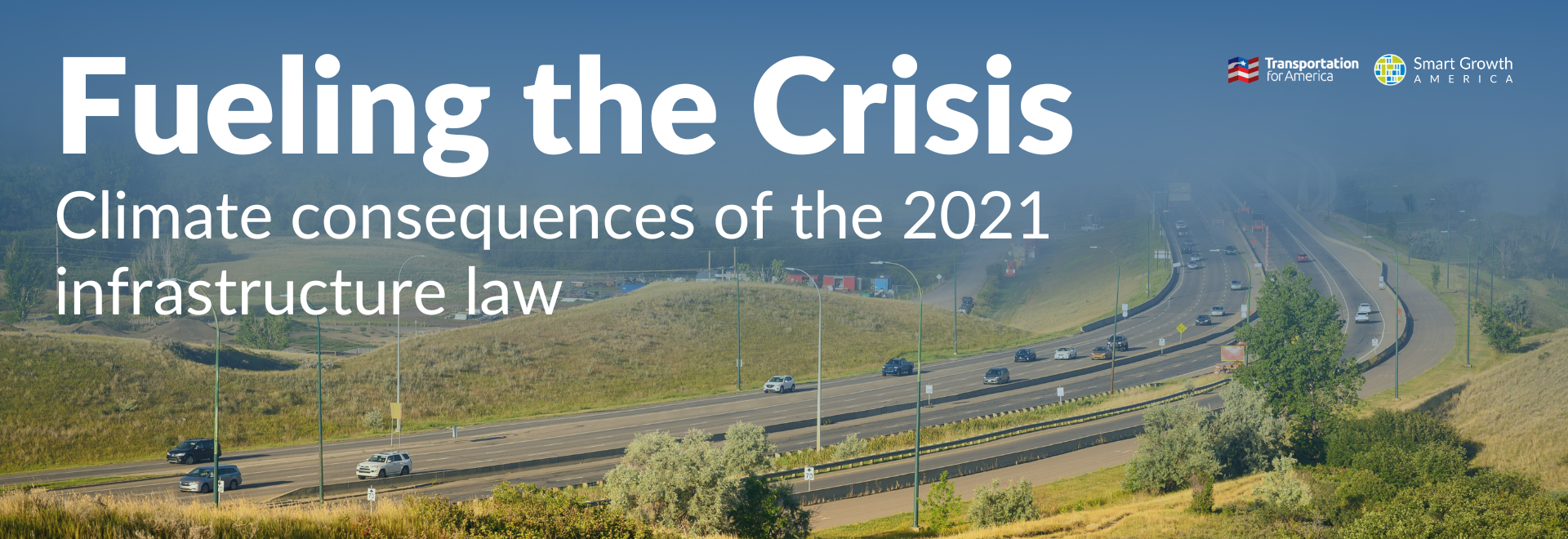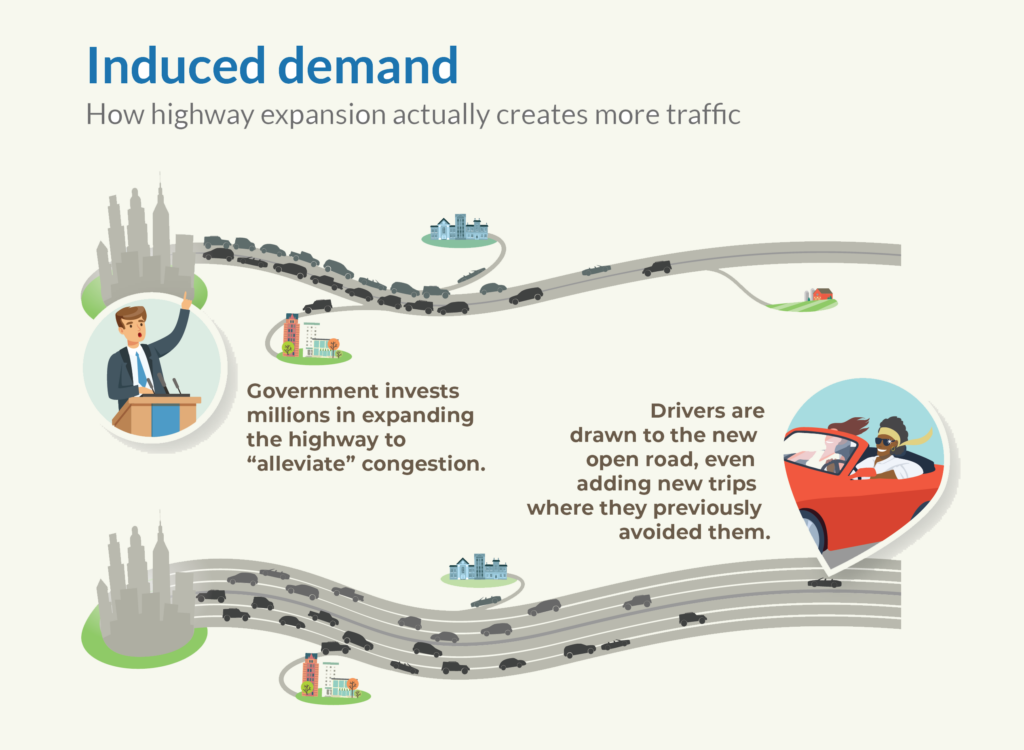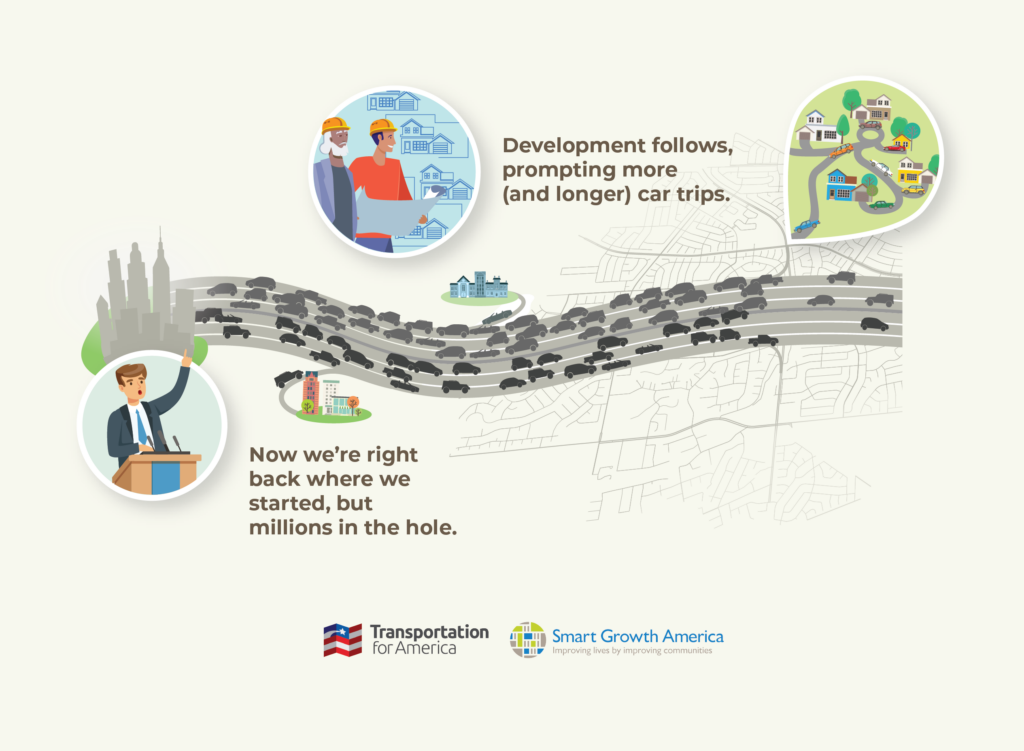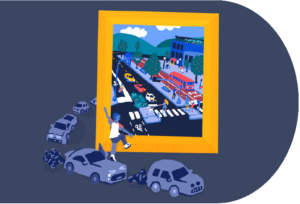By maintaining the status quo, the Infrastructure Investment and Jobs Act, from the beginning, was going to increase emissions by facilitating more wasteful spending on business-as-usual highway expansion. Giving state DOTs—who have, for years, chosen to invest heavily in emissions increasing projects—even more money with no requirement for change could only have resulted in this exact outcome.
As we see from Americans’ increasingly forced reliance on private vehicles to reach daily needs, rising deaths of people walking, and even more projects that displace communities, state DOTs are broadly failing to create a system that is affordable, equitable, or environmentally sustainable.
Without better policies, more money for transportation will translate to more pollution and other negative outcomes for public health and economic opportunity. The next transportation reauthorization will only continue to exacerbate transportation’s negative climate impact and increase costs to users and taxpayers. If Congress decides to match the IIJA’s funding ambitions with good policy, the next reauthorization is a chance to undo mistakes and make real transformational investments in transportation across the country.
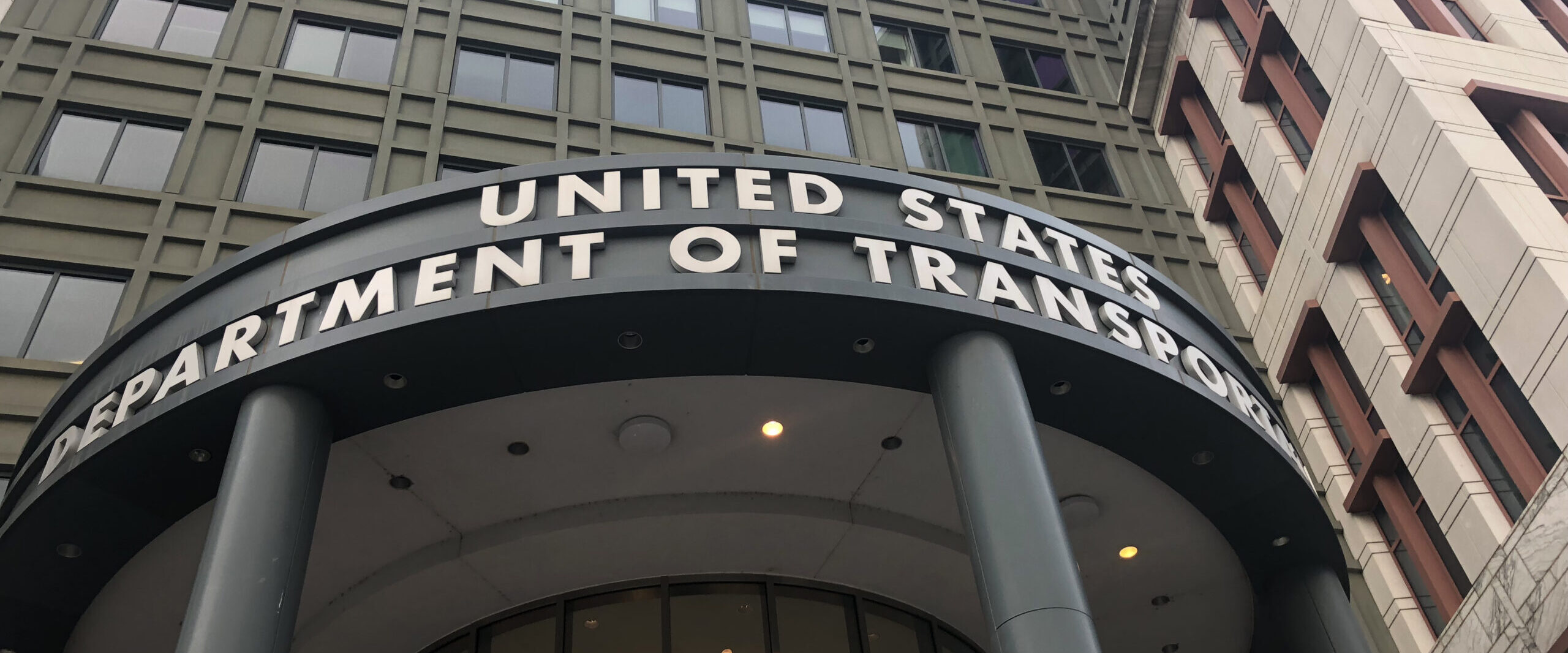
USDOT: Three things that can be accomplished now
While the USDOT is responsible for discretionary grant funding selection, it can only indirectly influence states’ decisions on how to use federal formula funds. However, USDOT can still exhibit stronger leadership to influence how the remaining Infrastructure Investment and Jobs Act funds are spent.
1. Account for induced demand and measure what matters
While the phenomena of induced demand has been observed for generations, states and MPOs largely continue to use modeling tools that, to our detriment, fail to account for its influence on traffic, emissions, and land use and development patterns. The US Department of Transportation needs to acknowledge the role that building new roads plays in increasing demand for driving, and how accommodating wider roads inevitably leads to more emissions and continued congestion.
Click here to view a larger graphic
USDOT should develop transparent methods and models for state DOTs and metropolitan planning organizations to account for induced demand, including costs to users, maintenance costs, and environmental harms of increased vehicle miles traveled in federally funded projects. These models and their findings should be publicly available in a clear format so that taxpayers can easily view and understand the results of their investments. Initiatives supporting models like VisionEval are promising, but USDOT should make efforts to more broadly encourage states to adopt similar tools.
2. Stop awarding discretionary grants to highway expansion projects
Across multiple discretionary grant programs, USDOT has used its authority to award funds to highway expansion projects or those that fail to serve communities. Large amounts of funds from multiple discretionary grant programs (INFRA, MEGA, Rural, Bridge Investment Program, and potentially even a portion of funds from the Reconnecting Communities and Neighborhoods Program) have been directed toward highway expansion projects that will inevitably result in increased emissions and even more assets that will require maintenance investments well into the future.
USDOT should stop investing in emissions-increasing highway expansion projects. Instead, USDOT should use its dollars to encourage more innovative solutions from applicants that do not increase greenhouse gas emissions or worsen public health, safety, and travel conditions for those who live near highway corridors.
3. Increase transparency of federally funded projects
State DOTs report their federally funded and regionally significant projects in state transportation improvement programs (STIPs), but large-scale analyses of states’ use of federal dollars remain difficult. Each state uses different standards and formats to report project data. Some states provide information in modern, accessible formats, while others report projects in formats that are difficult to parse, making it challenging to accurately identify the true intended uses of government funds based on descriptions and project names.
Further, even though this data is often available in accessible formats internally, state DOTs have denied requests by advocates for accessible, machine-readable versions of states’ STIPs—and metropolitan planning organizations have done the same for their version of STIPs, known as transportation improvement programs or TIPs. A lack of transparency prevents taxpayers from ensuring that public funds are actually being used to advance their goals. USDOT should ensure that all relevant data on federally funded transportation projects are freely available to the public.
USDOT should create a standardized format for reporting capital project descriptions logged to STIPs, with analyzable, objective data on how funds are being used, in relation to their influence on physical space. Project descriptions should account for how space is allocated to cars, pedestrians, bikes, or transit, and include information about how that space is separated. STIPs should be publicly available in machine-readable formats for accessibility and ease of use. This would allow for greater transparency and government accountability on the use of taxpayer dollars and could provide data for analyzing the effectiveness of different design standards. Absent changes, USDOT should ensure that states’ STIPs are provided to the public in formats that are compliant with existing accessibility guidance and law.
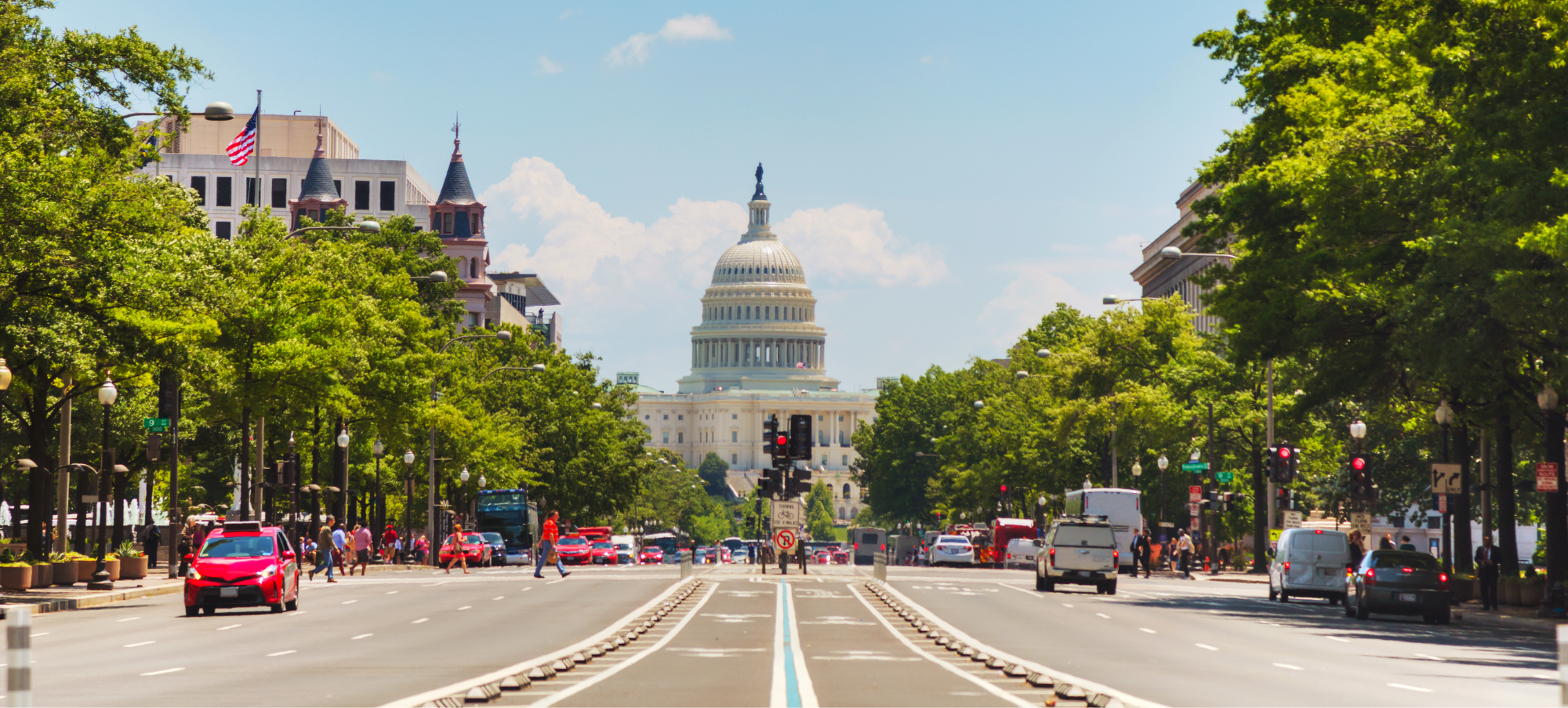
Congress: Three things that can be accomplished during the next reauthorization
A top responsibility of the 119th Congress will be to draft a bill to replace the Infrastructure Investment and Jobs Act, which expires in 2026. With the existing program failing to move us in the right direction for repair, safety, and transportation options, Congress needs to think big and reorient the federal surface transportation program to ensure that taxpayers’ dollars efficiently advance the goals that matter.
1. Prioritize safety over speed
It is no coincidence that the United States has both some of the developed world’s worst safety outcomes and climate pollution from our transportation network. Much of the emissions-increasing investments funded by the IIJA are informed by practices, standards, and guidance in the transportation profession that place an excessive emphasis on moving cars as fast as possible. Because high speed driving is the top priority for transportation planners, getting around outside of a car becomes a very dangerous endeavor. As a result, most Americans are forced to drive even short distances that would be walking or biking trips on a safer system. .
Congress should require a Complete Streets approach to roadway design and direct recipients of federal funds to phase out outdated models and practices, like level of service, that put people and the climate in danger for little actual benefit. These measures should be replaced with metrics that track what actually matters: how well the transportation system is getting people where they need to go.
2. Fix it first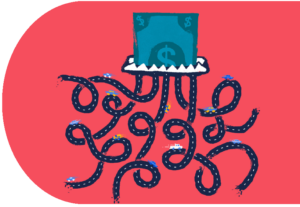
Because the IIJA did not come with spending guardrails, billions of dollars have been obligated to projects that not only increase emissions but add to the total number of highway assets we inevitably must pay to maintain—while old assets crumble. While data from the FHWA is slowly trickling in on the condition of the country’s highway infrastructure assets, our analysis shows spending trends are worryingly similar to pre-IIJA ratios that underfunded maintenance. In 2022, Americans traveled an average of over 900 million miles on pavements in poor or very poor condition every day compared to . Based on National Bridge Inventory data available in 2024, over 220,000 bridges need repair and over 76,000 should be replaced entirely. That’s only a 5% improvement over a ten year period and hundreds of billions in federal funding since 2012. Transformative investments should bring us more than marginal improvements.
Congress should require states to invest in repair of the existing system before they add to the system. When they do add lanes or new roads, they should first show that they can afford to maintain that asset throughout its useful life while improving the condition of the whole system.
3. Invest in the rest
The United States does not have a world-class transportation system because we have only invested in one part of that system—roadways. We have been left behind by our competition around the world when it comes to building a complete transportation system with high quality transit, active transportation, and intercity passenger rail networks. Americans want more options for transportation, and, when surveyed, 71% of respondents agreed that states should shift funding from highways toward transit and active transportation. Despite this, the majority of analyzed IIJA obligations have gone toward expensive incremental additions to the same old limited system we have been building for 70 years. It is time to build a complete transportation system.
To address this, Congress should prioritize investments in bus, rail, and walking and biking infrastructure to bring spending on these high-demand modes up to par with our cumulative investments in highways. To do this, they should restructure federal formula program funds and break the arbitrary 80/20 split of federal investments in highways versus transit and reform processes to ensure that these projects can cost effectively deploy at transformative scales.
Learn more about our three principles for infrastructure investment
Click below to access blog posts on our three principles: design for safety over speed, fix it first, and invest in the rest.





